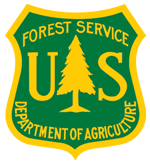Vulnerability Assessments Source Materials
Adapting conservation to a changing climate: an update to the Illinois Wildlife Action Plan
Publication Date: 2011
Credits: Report to the Illinois Department of Natural Resources
Fair Use OK
DOWNLOAD FILE — PDF document, 2,081 kB (2,131,526 bytes)
Full CCVI results supplement to Adapting Conservation to a Changing Climate: An Update to the Illinois Wildlife Action Plan
Publication Date: 2011
Credits: Illinois Chapter of The Nature Conservancy
Source: Walk, J., S. Hagen, and A. Lange. 2011. Adapting Conservation to a Changing Climate: An Update to the Illinois Wildlife Action Plan. Report to the Illinois Department of Natural Resources. Illinois Chapter of The Nature Conservancy, Peoria, IL.
DOWNLOAD FILE — PDF document, 192 kB (197,118 bytes)
Assessing the Potential Effects of Climate Change on Species in the Cumberland Piedmont Network of the National Park Service
Publication Date: 2012
DOWNLOAD FILE — PDF document, 9,468 kB (9,695,363 bytes)
Climate Change Vulnerability Assessment of Species of Concern in West Virginia
Publication Date: 2011
Credits: West Virginia Division of Natural Resources. Elkins, WV.
Fair Use OK
DOWNLOAD FILE — PDF document, 2,894 kB (2,964,169 bytes)
Identifying Species in Pennsylvania Potentially Vulnerable to Climate Change
Publication Date: 2011
Credits: Pennsylvania Natural Heritage Program, Western Pennsylvania Conservancy, Pittsburgh, PA
DOWNLOAD FILE — PDF document, 804 kB (823,393 bytes)
Protecting southern Appalachian wildlife in an era of climate change
Protecting southern Appalachian wildlife in an era of climate change - Read More…
Species assessments by the Virginia Division of Natural Heritage
Publication Date: 2010
Credits: Virginia Department of Conservation and Recreation, Division of Natural Heritage, 2010
DOWNLOAD FILE — Excel spreadsheet, 21,318 kB (21,829,632 bytes)
Vulnerability of at-risk species to climate change in New York
Publication Date: 2011
Credits: New York Natural Heritage Program
Fair Use OK
DOWNLOAD FILE — PDF document, 1,848 kB (1,892,391 bytes)






















